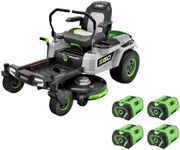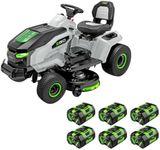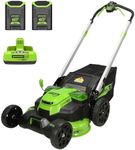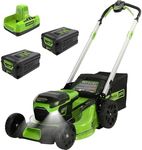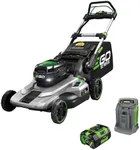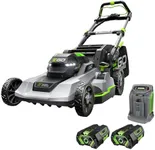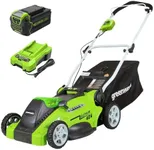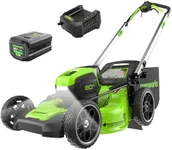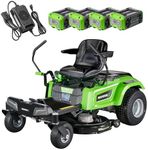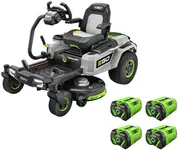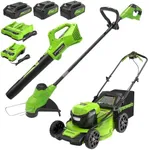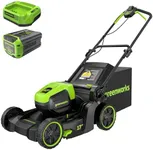Buying Guide for the Best Battery Powered Lawn Mowers
Choosing a battery-powered lawn mower is a great step toward quieter, cleaner, and more convenient yard maintenance. To make the right pick, consider how large your lawn is, the kind of grass you have, and how frequently you mow. Battery-powered mowers are much easier to start and maintain compared to gas models, but they do come in various styles and power levels. It's important to think about your priorities: do you need longer run time, easier maneuverability, or special features? Understanding the key features will help you find the best fit for your specific needs.Battery Voltage and CapacityBattery voltage tells you how powerful the mower’s motor can be, while capacity (often given in amp-hours or Ah) affects how long the mower can run on a single charge. Higher voltage usually means more cutting power, which is better for thick or tall grass, but it might be heavier. The capacity shows how much energy the battery stores. For small lawns, lower voltage and capacity might be enough, but for larger areas, look for higher numbers. If you have a bigger yard or tougher grass, go for a mower with both high voltage and high capacity to avoid running out of power mid-mow.
Cutting WidthCutting width is the size of the strip of grass the mower cuts in one pass. A wider cutting width helps you finish mowing faster, which is great for bigger lawns, but these mowers can be harder to maneuver in tight spaces. Smaller cutting widths are better suited for small lawns or areas with lots of obstacles, where maneuverability is more important than speed. Choose the cutting width that matches your yard size and how easy you need the mower to be in corners and around obstacles.
Run Time and Charging TimeRun time is how long the mower can operate on a full battery, and charging time is how long it takes to fully recharge the battery. If you have a small lawn, most run times will be sufficient, but for larger or more challenging areas, a longer run time is helpful so you can finish in one go. Fast charging can also be convenient if you sometimes forget to charge the battery in advance. Think about how long your mowing sessions usually last and whether you’d prefer to mow all at once or don’t mind waiting for a recharge break.
Adjustable Cutting HeightAdjustable cutting height lets you choose how short or tall your grass will be after mowing. Some mowers have several positions to choose from, while others may have just a few. A wide range of adjustable heights ensures you can adapt to different grass types, weather conditions, and personal preferences for your lawn’s appearance. If you like experimenting with lawn height or have different types of grass, more adjustment options can be helpful. Otherwise, a basic range may be enough.
Weight and ManeuverabilityThe weight of the mower affects how easy it is to push, lift, and store. Lighter mowers are easier to handle, especially on smaller lawns or for people who prefer not to exert much physical effort. However, heavier mowers might stay more stable and cut more evenly on rough or uneven terrain. If you have lots of curves, obstacles, or narrow spaces, look for a light and nimble model. If your yard is mostly flat and open, weight is less of a concern.
Grass Clipping ManagementBattery mowers can handle grass clippings in various ways: some collect them in a bag, others mulch them finely and return them onto the lawn, and some side-discharge the clippings out of the mower. Bagging is tidy but requires emptying; mulching puts nutrients back into the soil and reduces waste; side-discharge is fast but can be messier. Consider how you want to deal with grass clippings: if you want a neat lawn, bagging might be best; for fertilizer benefits, look for mulching; and for speed, side discharge is usually the fastest.
